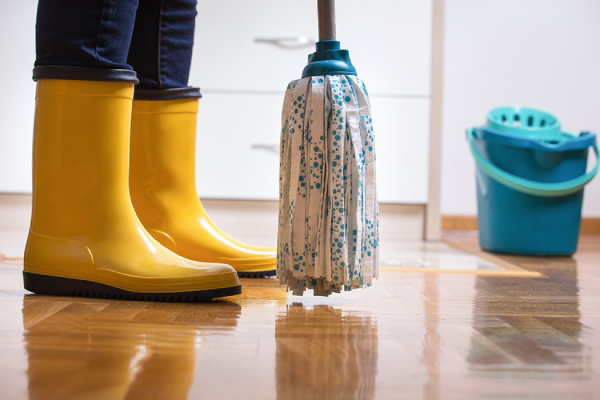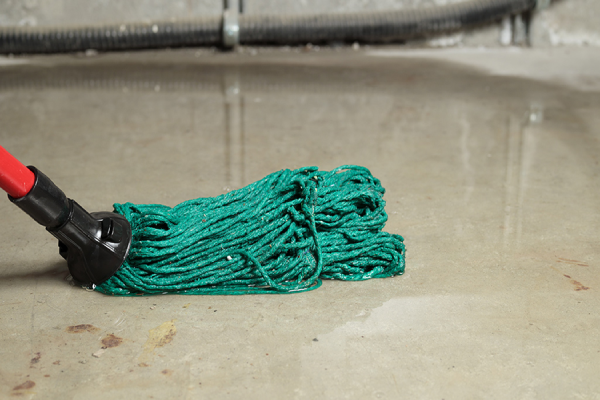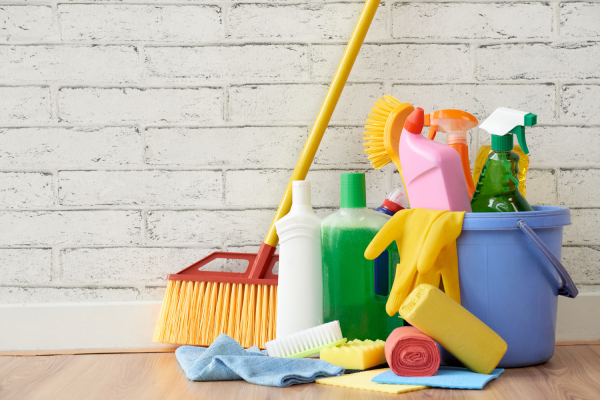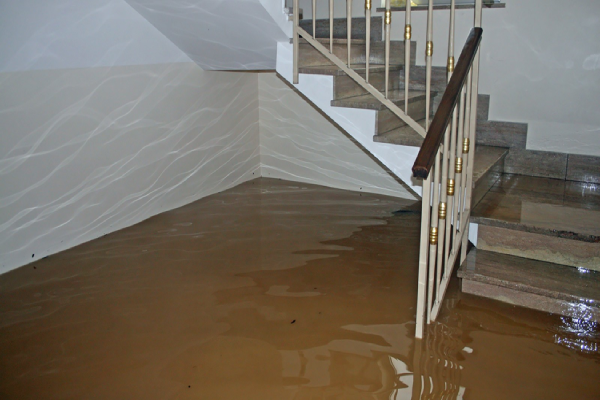Floods are shocking. They not only destroy your home and belongings, but also make a mess that can be dangerous to your health. Understanding how to sanitize basement after flood is very important. In this article, we will walk you through the process of sanitizing a flood and why hiring a professional water restoration service in Vancouver can be a big difference.

Stay Safe Before You Begin
Before you start cleaning up, make sure it’s safe to enter your home. Flood water can damage a building’s structure and create dangerous conditions. How to sanitize after a flood? Consider these tips:
- Inspect for structural damage. If walls or floors look weak or unstable, wait for professional help.
- Turn off the electricity and gas to avoid shocks or leaks.
- Wear protective gear like rubber boots, gloves, and an N95 mask.
- Document the damage with photos for insurance.
- Remove Water and Begin Drying
After it’s safe, the second step is to eliminate the water:
- Use buckets, wet vacs, or pumps to drain standing water.
- Open doors and windows to allow air to circulate through your home.
- Set up fans and dehumidifiers in the affected areas to accelerate drying.
- Get rid of anything that can’t be dried or cleaned completely, like wet mattresses, carpets, or insulation.
Drying is also an important aspect of how to sanitize after a flood, since damp areas encourage mold growth, which adds other health hazards.
Clean First, Then Disinfect
To understand how to sanitize basement after flood, remember that cleaning and disinfecting are not the same. Cleaning removes dirt, but disinfecting kills germs. Both are needed, so start according to this:
- Start by washing all surfaces with soap and warm water.
- Clean the floors, walls, countertops, and any other water-flooded surface.
- Remove the drywall, baseboards, and flooring if they are water-damaged.
Disinfecting Properly
After cleaning, it’s time to disinfect. Here is a simple and safe method:
- Combine 1 cup of bleach with 5 gallons of water.
- Wipe or spray the solution on all hard surfaces like tiles, countertops, and bathroom fixtures.
- Let it sit for at least 10 minutes before wiping it off.
- Provide enough ventilation when cleaning with bleach to avoid strong fumes.
- Clean high-touch areas where people touch often: doorknobs, light switches, handles, and remote controls. These areas can spread bacteria rapidly if you do not clean properly.
How to Sanitize Basement After Flood
Basements are usually the most impacted places by a flood. Basements are usually damp, poorly ventilated, and dark. So they are the perfect environment for mold and bacteria growth. How to sanitize basement after flood?
- Drain it out quickly with a sump pump.
- Dry it out with fans and industrial dehumidifiers.
- Clean the walls and floor with soap and water.
- Sterilize with bleach solution or mold remover.
- Seal walls and floors to prevent further damage
- When something smells damp in the basement, use odor removers and ventilate it.
You might also need to check your basement wiring, insulation, and furniture. If all of these must be more than cleaned, it’s best to remove and replace. Basement carpets are particularly hard to clean and often have to be discarded.
Don’t Forget Soft Surfaces and Fabrics
Soft furnishings such as upholstery, furniture, and clothing will soak up flood water and become ideal breeding grounds for bacteria and mold. We suggest you to wash all clothing and fabrics as soon as possible in hot water and detergent. For large or delicate items such as sofas and cushions, it’s advisable to have a professional cleaner with the equipment and expertise to treat them properly. If there is still a smell or there is actual mold present, it is safer to discard the item to prevent health risks. While some products can be recovered through the use of fabric-safe disinfectants, immediate action, ideally within 24 to 48 hours after flooding, is required in order to achieve the maximum potential for recovery.
The Need for Mold Avoidance
Knowing how to sanitize a basement after a flood is very important, but remember that mold is the most dangerous problem that occurs after a flood. Mold not only destroys surfaces, but it also destroys indoor air quality and causes allergies or respiratory issues. Prevent mold growth by these methods:
- Keep the humidity in your home below 50% using dehumidifiers.
- Open windows and use fans to increase air circulation.
- Throw away visible mold using commercial mold cleaners.
- Throw away anything that cannot be thoroughly cleaned or dried.
Mold can be growing behind walls, under floors, and in ducts, and that’s why it’s imperative to check from time to time. This is just another reason why how to effectively sanitize following a flood is an issue of your home’s security.
Why You Should Call the Professionals?
Flood clean-up is overwhelming, especially when you have a lot of damage. Mold can already form in as short a time as 24 to 48 hours after water contact. That is when you need professional water restoration services. They know how to sanitize after a flood and do not just drain water. They:
- Extract water effectively with heavy machinery.
- Dry the building carefully, even in hidden areas.
- Sanitize surfaces with industrial-strength disinfectants.
- Remove and prevent mold.
- Deodorize the building to eliminate widespread odors.
- Provide moisture readings and air quality testing.
Hiring professional restoration services not only saves you time and effort but also ensures that your home is clean and safe. Professionals follow health and safety guidelines, which means a cleaner and more efficient cleanup.
Prevention Tips Against Future Flood Damage
You’ve already learned how to sanitize basement after flood, but you may want to take steps to protect your house from future floods.
- Install a battery backup sump pump in your basement.
- Relocate electrical outlets and appliances to above flood levels.
- Seal cracks in basement walls and the foundation.
- Clean gutters and drains to prevent overflow.
- Install waterproof flooring in flood-prone areas.
Preparation won’t stop a flood, but it will reduce damage and cleanup.
Conclusion
Understanding how to sanitize basement after flood is important and you can remove the stress from the process. Always start with safety, empty the water, clean everything through, and then disinfect. This is how you get your home back to a habitable condition. If your basement is involved, leave it to certified professionals like Revive Restoration Company to do the job. Their assistance guarantees that your home is not just dry but really clean and safe to move back into once more.
Revive Water Damage Restoration in Vancouver
If you are in Vancouver and need help after a flood, Revive Restoration is a company you can count on. We provide full water damage restoration north Vancouver, from water extraction to full sanitizing and mold protection. Revive Restoration has trained technicians who use advanced tools to restore homes and buildings. Their quick response and reliable service can reduce damage and lower your costs in the long run. We also offer emergency services and free consultations to assess your needs. The work consists of thorough drying, sanitizing, and disinfecting step by step, so each inch of your house is secure. Call us today to consult and use our services.




